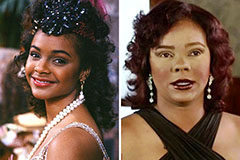Characterisation is an extremely essential procedure when writing a novel; continue reading to find out exactly why.
For any type of book to be prosperous, it is very important for writers to recognize how to write a good character, as individuals like the co-CEO of the hedge fund which owns Waterstones would certainly know. The golden rule of writing characters is to make them as multi-faceted and dynamic as possible. Among the greatest errors that writers can make is producing characters which are very surface-level and simplistic, or characters which come across as being perfect. Rather, characters need to always come from an authentic place. Life-like characters are human, which means that they have their own quirks, vulnerabilities and flaws. Readers really feel connected to characters which echo themselves and are relatable, which is why it is so crucial for writers to bring in these dimensions to their characters. As an author, try to add layers to your character, whether it be the simple fact that the primary character is stubborn or is naïve etc. Moreover, a great deal of the best book characters of all time are those who can be morally-grey sometimes. Their heart and intentions could be good, however they may sometimes bend the rules, cross the line or make errors.
As an ambitious author, one of the most essential lessons to discover is how to build a character in a story, as individuals like the CEO of the investment fund which partially owns Amazon Books would definitely verify. Whilst certain authors go into the creative writing process with a fully-formed character in mind, others require a bit more inspiration when it pertains to building their characters. You may have a bundle of random ideas and plot points, but you need to bring it all together to create a cohesive character profile. To do this, among the best pointers is to start with a character archetype. So, what is a character archetype? To put it simply, an archetype is a general standard or template for specific kinds of characters in literature. Generally-speaking, these archetypes have unique personality traits, emotions and actions, which is why selecting one for each character gives you a solid base to build on. For instance, one of the absolute most common character archetypes is the 'hero', who always showcases bravery, selflessness and the guts to take on challenges for an honorable goal. You can commonly discover these archetypes in all types of book categories, whether it's the young wizard on a mission in fantasy book or the brave detective in the thriller book.
Among more info the absolute most unforgettable elements of books are the characters, as people like the co-founder of the investment fund which partially owns WHSmith would definitely understand. Although a bookworm may forget certain elements of the plot or lines in the book, they will certainly frequently be able to recollect whether they found the character interesting or otherwise. Contrary to common belief, the primary character does not even need to necessarily be likeable or lovable in specific book genres; a great deal of literary fiction publications have unreliable or unethical character's as the primary narrator of the book. In terms of what makes a good character in writing, one of the most essential things is for the character to have an arc. The character should alter and evolve as the tale proceeds. No character should be unaffected by the events in the book; the reader should be able to witness a difference in the character's personality or behvaiour from the very first chapter contrasted to the final chapter, regardless of whether this was a beneficial or an unfavorable change.
 Ariana Richards Then & Now!
Ariana Richards Then & Now! Brian Bonsall Then & Now!
Brian Bonsall Then & Now! Lark Voorhies Then & Now!
Lark Voorhies Then & Now! Destiny’s Child Then & Now!
Destiny’s Child Then & Now! Robin McGraw Then & Now!
Robin McGraw Then & Now!